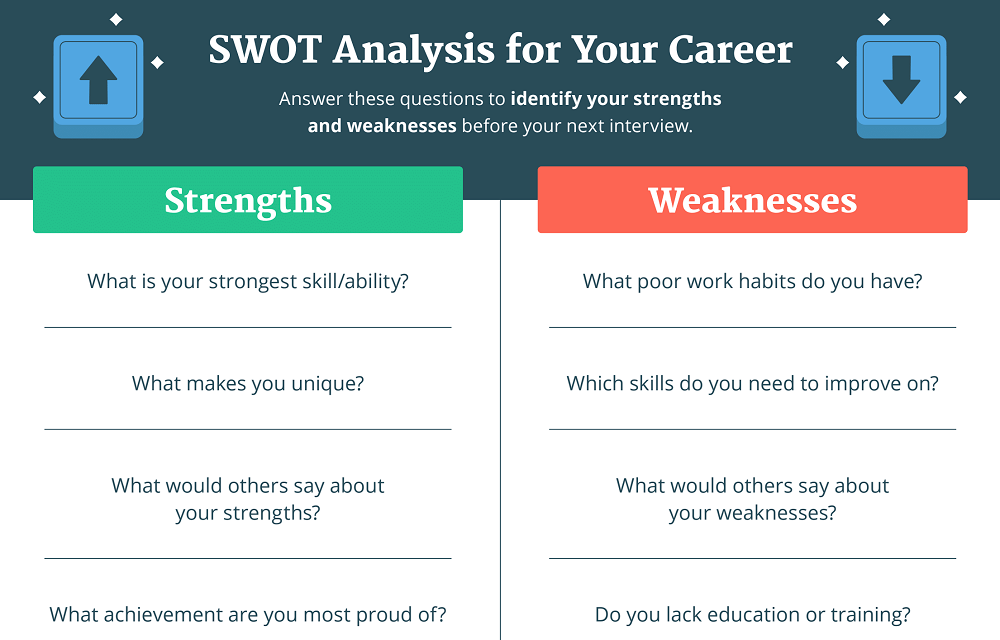Using Competitor Analysis to Land a Job After College

Job searching after graduation is intimidating and often overwhelming. With such a competitive job market, it can be hard to determine how to stand out from other candidates and get companies to hire you. Your first professional job out of college is important. It’s your first stepping stone into the professional world and will make a significant impact on you and your future career.
With so many students earning degrees, it makes landing a job that much harder. Because of this, the competition for jobs is fierce. So what can you do to ensure you’re successful in your job search and land your dream job fresh out of college? Competitor analysis frameworks may be your answer.
If you’ve ever heard of competitor analysis, you probably think it’s just a strategy companies use to help differentiate themselves from their business competitors. While it is a viable strategy for businesses, it can also be a key strategy that job seekers can utilize to help them stand out from other job candidates. If you’re interested in learning more about this helpful job searching tool, read on to discover 3 competitor analysis frameworks you can utilize today:
SWOT Analysis
If you’re unfamiliar with a SWOT analysis, it stands for strengths, weaknesses, opportunities and threats. Not only is this a great framework to use to determine what sets you apart from other candidates, it’s also great for interview preparation.
When determining your strengths, ask yourself these questions:
- What is my favorite skill?
- What skill comes easy to me?
- What skills am I most proud of?
- What skills have I been acknowledged for?
Identifying your strengths will help you highlight relevant skills you have that can set you apart from the competition and help you catch a potential employer’s attention.
Identifying your weaknesses can oftentimes be hard. If you’re having trouble, ask yourself these questions:
- What area has held me back in the past?
- Is there anything I have been given negative feedback on?
- What bad habits do I have at work?
- What scares me about applying for this job?
Employers almost always ask candidates to explain their weaknesses in an interview, so this is great preparation. Remember, when uncovering your weaknesses, always have a plan of action in place on how you can overcome them.
Next, you’ll want to identify opportunities. To do this, ask yourself these questions:
- Are there any missing skills I can get trained in?
- Are there any skills other candidates are lacking?
- Do I have a strong network?
- What skills of mine lead to opportunities?
Similar to your strengths, your opportunities are going to be what sets you apart from other candidates.
Finally, you’ll want to identify any threats that could potentially hurt your chances of landing a job. To uncover these, ask yourself the following questions:
- Is my industry growing or shrinking?
- Are other applicants more qualified than I am?
- Could any of my weaknesses keep me from landing the job?
- Is technology and automation a threat in my industry?
Similar to weaknesses, try coming up with solutions to each of the threats you encounter.
Perceptual Mapping
Perceptual mapping is another great strategy to use to uncover your competitive edge. This method is used to create a visual representation of how potential employers might perceive by uncovering specific qualifications and attributes needed to land the job.
To complete this exercise, you’ll want to pull up the job description you’re applying to and pick two of the required skills or qualifications listed. Make two perpendicular lines forming a cross. Once you choose two skills, put one on the x-axis and put one on the y-axis. Then, you will rate how you think others will perceive those skills and put a dot in that spot. This will help you determine whether or not you are qualified for a position.
Porter’s Five Forces
The last and final framework is known as Porter’s Five Forces model. This analysis helps you see all of the aspects of the competition to give you a better understanding of where you stand in your job search. This model consists of five main components:
Existing Competitors
In your job search, existing competitors simply refers to other applicants. To help you understand the current competition, you’ll want to list some of the personas of other applicants. For example, an intern or recent college graduate.
Bargaining Power of Buyers
The bargaining power of buyers also refers to the applicants in the job market, but you’ll want to think of ways that you have bargaining power in your industry over other applicants. If you have held multiple internships relevant to the position and it’s an entry level role, you may be qualified to ask for a higher starting position.
Bargaining Power of Suppliers
Bargaining power of suppliers refers to the way the hiring company has bargaining power. For example, to attract qualified candidates, a company may offer competitive salaries, benefits and other perks.
Threat of New Alternatives
Threat of new alternatives is similar to the threats we mentioned in the SWOT analysis. You’ll want to determine what new alternatives are emerging in your industry and how you can adapt to them to stay competitive.
Threat of New Entrants
Finally, the threat of new entrants refers to new job seekers entering the market. These new entrants can be recent grads or employees looking to change companies. Think of what these new entrants might bring to the table that could pose a threat, and think of ways you can keep yourself competitive with them.
To help make these frameworks easier, JobHero created these competitor analysis worksheets to help you uncover your potential and make your job search easier! Though finding a job right after college can seem scary, investing in the right tools and strategies can help you become a stronger candidate and help you land the job of your dreams.



Absolutely! With so many students earning degrees, it makes landing a job that much harder. Because of this, the competition for jobs is fierce.